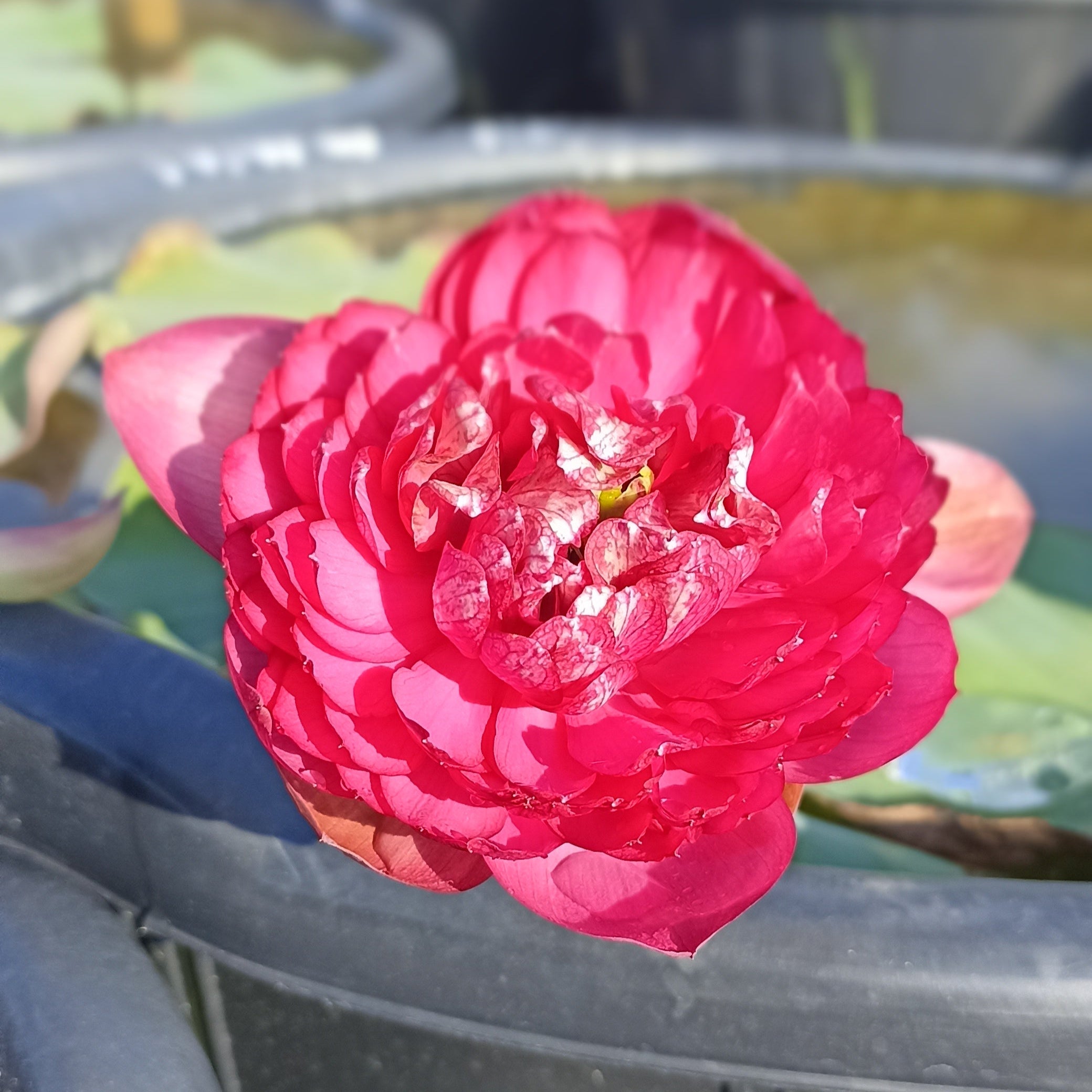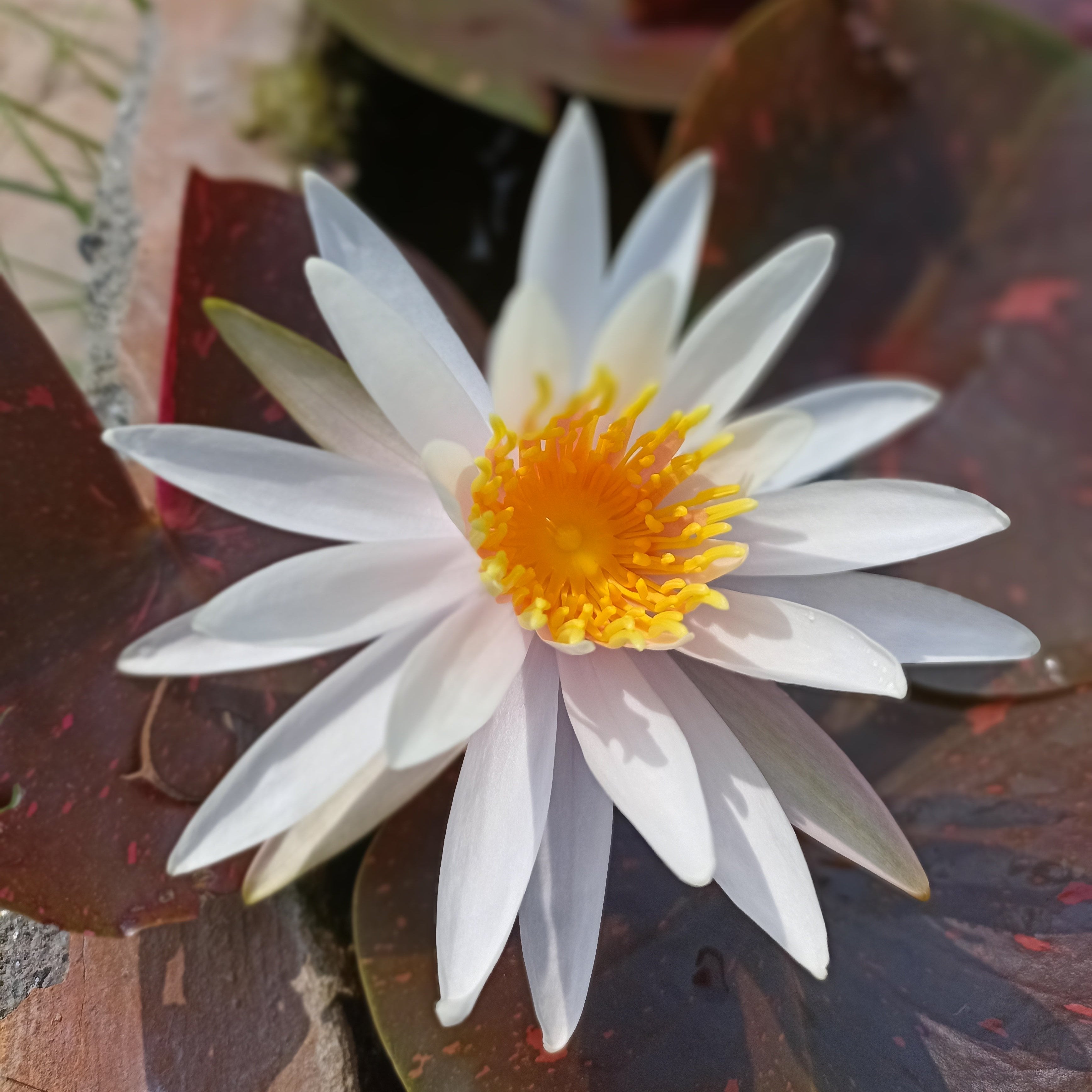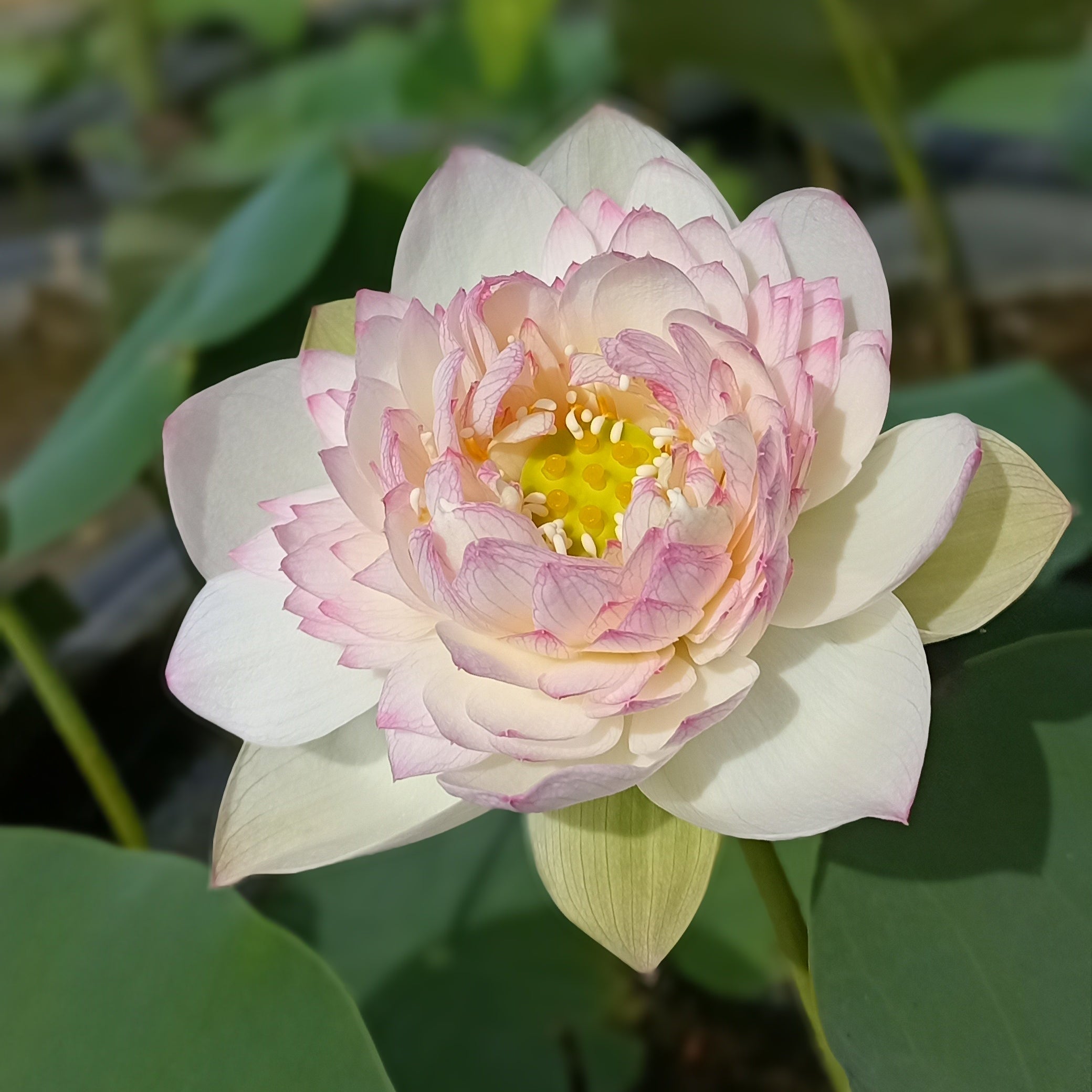Direct Planting in Container
Things You Need

1. Pot/Container
Material: Plastic, fiber, or concrete
Diameter: Minimum 24 inches (30–36 inches is excellent)
Depth: Around 12–15 inches

2. Soil Requirements
Preferred: Clay soil
Alternative: Any topsoil without cocopeat or manure mix

3. Manure (Use any ONE)
Cow dung manure
Goat dung manure
Vermicompost
Ratio: Soil : Manure = 5:2

4. Fertilizer (Optional)
NPK 20:20:20 (granules or powder)
Use 1 tablespoon once a month after 30–45 days

5. Water
Any non-hard water that is drinkable
Options: Borewell, tap, or RO water

6. Sunlight
Ensure 4–6 hours of direct sunlight daily for healthy plant growth.
FAQs
What should I do when I receive my plants?
Remove any dry or rotten leaves. Do not be alarmed if the leaves have blackened, as fresh new leaves will sprout in a few days. Blackening of leaves is a common occurrence as the plant has been out of water during transit. We recommend that you plant your waterlily immediately on receipt to reduce stress on the plant. If you are unable to plant your waterlily immediately, you may float the entire plant (including roots and leaves) in a bucket of water and place it in shade. Cover it with a damp newspaper to help retain moisture. Note that this is only an interim solution, you will need to plant your waterlily no later than 24 hours from receipt.
What are the different methods of planting a water lily?
There are two methods of planting a water lily. Direct method and pond planter method. Under the direct method, the water lily is planted directly into the pond. Whereas under the pond planter method, the water lily is first planted into a container, which is then placed into a larger pond. Both methods work well and have their owns set of advantages. The direct method is usually sufficient for home gardens. This method offers more room for the water lily of grow and therefore does not require frequent re-potting. The pond planter method is recommended for large ponds and water bodies. You may choose any one of these methods based on your personal preference.
What kind of container should I use to grow my lilies?
You will need a pond made out of plastic or cement. Plastic and cement are excellent at retaining heat, which is essential for water lilies to thrive. Water lilies do well in ponds that are wide and shallow. The ideal size for a water lily pond is one that is around 2 feet wide and 15 inches deep. In general, containers of this dimension are easy to find at your local garden store. While there are no restrictions on the width of the pond, it’s important that you keep in mind that water lilies do not enjoy ponds that are very deep. Therefore restrict the depth of your pond to 15 inches. Check your pond for drainage holes and ensure that they properly sealed.
How do I plant my water lily?
In order to plant your water lily you will need a pond (see previous FAQ for more details), heavy top soil (red or black), either fresh cow dung or vermicompost to provide nourishment to the plant, and NPK fertilizer (power or pellet form). If you choose to follow the pond planter method, you will also need a planter that is around 12 inches wide and 8-10 inches deep.
To begin planting your water lily, fill the pond with 1 to 2 inches of either fresh cow dung or vermicompost. Water lilies need plenty of nourishment; starting off with a base of fresh cow dung or vermicompost provides nourishment to the plant and assists with flower production.
Next, fill the pond with about 5 inches of top soil and push in NPK fertilizer pellets or mix about a teaspoonful of NPK into the soil.
Using your fingers, tightly pack the soil. Next, hollow out a hole that is about 1-1.5 inches deep at the center of the pond and place your water lily. Spread the roots of the plant and close the hole with soil. Compress to ensure the plant stays in place. Ensure that the crown of the plant (that is the growing tip or the point from where the new leaves or buds emerge) is not covered by soil.
You may add a layer of sand to help keep the water clear.
Where should I place my lily pond?
Place your pond in an area that receives a minimum of 4 hours of direct, unfiltered sunlight, and you will have gorgeous blooms all year round. Sunlight is essential for water lilies; insufficient sunlight will cause your plant to slowly deteriorate and eventually perish.
How frequently should I refill my pond?
The water level in your pond will drop by a few inches due to evaporation. Gently fill the pond to the brim with a few liters of water every two or three days. Avoid disturbing the soil.
How do I keep my pond clean?
Maintaining a water lily pond is very simple and easy. Periodically remove old leaves and spent blooms by cutting them about 2 inches from the surface of the soil to give your pond a neat appearance. Algae and shells are a part of any water garden. Every 10 days, you may run your hand on the inner wall of the pond to remove any algae. Hand-pick and discard any shells that may appear.
Should I add fish to my pond?
You may add a pair of guppy fish to the pond, but do not feed the fish as they eat algae and help keep the pond clean. You may also drop an anacharis plant (available at local aquarium stores) for clear water. Remember to prune the anacharis periodically to ensure it does not overtake your pond.
Do water gardens attract mosquitoes?
There are several tips and tricks for killing mosquitoes and ensuring that they are not breeding off your water garden. Adding guppy fish to the pond solves the problem almost instantaneously. Guppy fish aggressively consume mosquito larvae and algae and will keep your pond clean and mosquito-free.
May I plant multiple varieties of water lily in the same pond?
Never grow more than one water lily plant in a single container. If you have a large pond, you may use the pond planter method to grow a separate plant in each planter. As a thumb rule, remember that water lilies can share the same water, but never the same soil.
What are the different kinds of water lilies?
There are two kinds of water lilies – Hardy water lilies and Tropical water lilies. Tropical water lilies grow from tubers, bear star-shaped flowers, and are prolific bloomers. Hardy water lilies grow out of rhizomes and bear cup-shaped flowers. Though certain hardys do not bloom as profusely as tropicals, the flower structure of hardys makes them true showstoppers. Both hardys and tropicals are fragrant, come in a full range of colors, and are a joy to own and grow.
Which varieties are suitable for someone new to water gardening?
Those new to water gardening are often overwhelmed by the range of varieties available. The color and variety you choose is purely a matter of personal preference, as both Hardys and Tropicals are very easy to grow and simple to maintain. Although not a fixed and definitive rule, we generally recommend that those new to water gardening start by growing a tropical water lily. This is because Tropicals tend to bloom profusely and will keep the grower motivated. If you plan to start your water gardening journey with two plants, we recommend that you try growing one Hardy and one Tropical.






